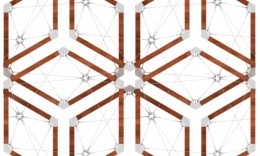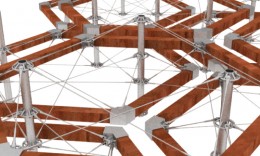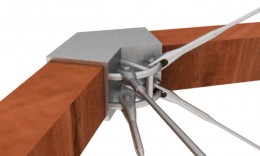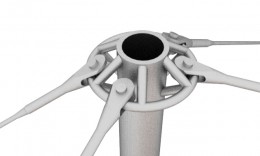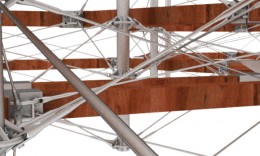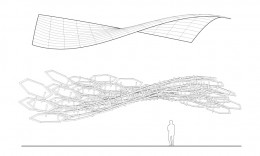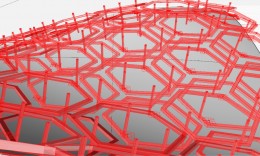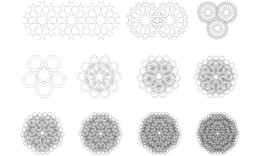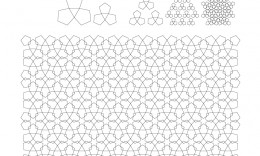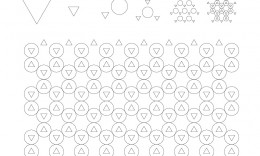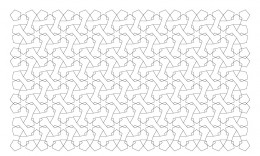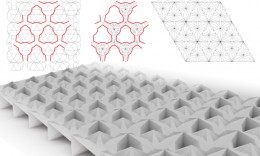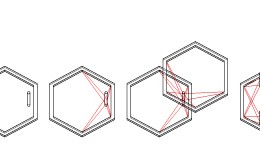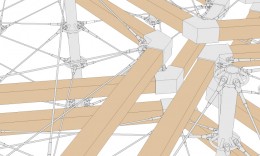This class examined the possibility of developing an architectural system through an iterative process that examined geometric field conditions, formal variations, and material explorations. My particular interest was in creating a module-based tensegrity system that would allow for mass-produced elements to recombine in a variety of programmed conditions. The final project describes two distinct elements that operate in compression: a regular hexagon module and a pole. Each of these is fixed in size and construction. Variety is introduced into the system entirely through variation in the lengths of the tensile members that hold the compression elements together.
Ultimately these elements can be combined to approximate double curvature, while retaining their structural performance. The dimensions of the tensile members are calculated using parametric software that arrays the compressive elements on a guide surface and determines the distances between the connection points.
The driving geometry behind the system is a system of offset layered hexagons. The tensile connection system is topologically based on the process of “weaving” these hexagons together, as illustrated in the following sets of diagrams.
